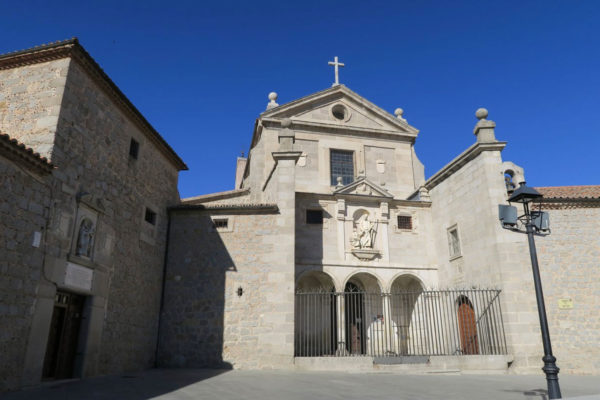
^ The Convent and Chapel of San Jose in Avila the first Carmel of St. Teresa’s Reform
The Teresian Reform
In time, a number of attempts were made to restore the original contemplative orientation of the Rule. The most outstanding of these was that of St. Teresa of Jesus, who lived in Spain from 1515 to 1582. She is the foundress of our Order, the Order of Discalced Carmelites. The custom of reformed orders going without shoes, that is of being “discalced”, as a sign of their renewed evangelical commitment, gave our Order its name.
St. Teresa was a nun in her hometown of Avila. For many years she was frustrated in her desire to lead a life of deep intimacy with God. In 1562 she founded the convent of San Jose, the first house of Discalced Carmelites. There she and a few friends who shared her ideals gave themselves to Christ in a life of retirement, prayer and poverty. St. Teresa enriched the Carmelite ideal through her insight into the mystery of the Church, her conviction of the apostolic power of prayer and her image of the Christian life as friendship with Christ. Her creative and lively personality has attracted many thousands to want to share her vision of Christian life.
St. Teresa personally felt the needs of the Church in her day. In the spirit of the Catholic Reformation she dedicated her life to the restoration of Christian unity. She gave her complete loyalty to the Church which she sought to enliven by a spiritual renewal at its heart. She had also an intense missionary concern. Her aim in founding a family of friars was to foster the fidelity and spiritual growth of her nuns through the help of brothers who shared her spirit. She also desired that her brothers provide the Church with a manifold service of prayer and apostolic activity.
The Discalced Carmelite Friars began their life together at a remote hamlet called Duruelo. There on 28th November 1568, St. John of the Cross and his companions made their vows. In great poverty they led a joyful life of prayer and preaching to their abandoned neighbors.
St. John of the Cross (1542-1591) shared St. Teresa’s aspirations. He learned from her, became a collaborator, friend and then her spiritual director.
John was an extraordinary man. He was twice kidnapped and once imprisoned for nine months in a dungeon for refusing to renounce the new reform. Yet in his frightful prison cell he wrote some of the greatest poetry of divine love ever written. He was never the superior of the new group. His role was more that of its spiritual director. He was a man of Renaissance culture, a sensitive friend, a man of conscience but above all a penetrating spiritual guide. He is recognized by the Church as its great theologian and psychologist of the spiritual life.
The twentieth century has witnessed an ever-increasing appreciation of the stature and relevance of both St. Teresa and St.John. Our ideal finds a clear expression in these two saints who embody our heritage. Both, together with St. Thérèse of Lisieux, are recognized by the Church as Doctors of the Church.

